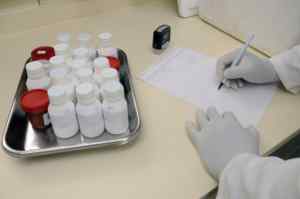A question that occasionally comes up regarding vasectomy reversals is whether or not the reversal increases the chance of future birth defects. Considering the lack of studies on this topic, it’s a completely warranted concern for couples who are planning their futures and who might find the potential risk unsettling.
While there have indeed been studies suggesting that men who previously underwent a vasectomy may experience higher rates of sperm abnormalities, follow-up studies have NOT been conducted to successfully link birth defects to vasectomy reversals. Furthermore, studies have suggested that the rate of birth defects may actually be higher among babies conceived through in vitro fertilization (IVF) and intra-cytoplasmic sperm injection (ICSI). At the Scott Department of Urology at Baylor College of Medicine, researchers found that the rate of birth defects in conventional IVF was nine percent, while that of ICSI was roughly the same at 8.6 percent.
 In a landmark study from the Vasovasostomy Study Group (VVSG) published in 1991, Dr. Arnold Belker and four other expert microsurgeons examined various facets of vasectomy reversal, including the risk of birth defects. Their trial, which followed 291 children born post-vasectomy reversal, found that only three of the 291 subjects displayed birth defects. That’s a one percent birth defect rate.
In a landmark study from the Vasovasostomy Study Group (VVSG) published in 1991, Dr. Arnold Belker and four other expert microsurgeons examined various facets of vasectomy reversal, including the risk of birth defects. Their trial, which followed 291 children born post-vasectomy reversal, found that only three of the 291 subjects displayed birth defects. That’s a one percent birth defect rate.
Compare this number to the overall birth defect rate in the entire U.S. population, and you’ll find that it compares quite favorably. According to the Physicians Committee for Responsible Medicine (PCRM), approximately three percent of children born in the US are born with major birth defects. After accounting for birth-related developmental abnormalities by the age of one, this number rises to about six or seven percent.
All in all, the risk of post-vasectomy reversal birth defects shouldn’t stop you from planning your future, as the odds don’t vary too much from that of the general population.
For more information on One Stop Medical Center’s no-scalpel vasectomy reversal procedure, please contact us for a consultation.
 After undergoing a
After undergoing a  Last month, we
Last month, we  You may be familiar with the term “antibodies” as “something that helps the body ward off disease,” but the notion of sperm antibodies might seem counterintuitive. After all, why would the body want to destroy perfectly good sperm?
You may be familiar with the term “antibodies” as “something that helps the body ward off disease,” but the notion of sperm antibodies might seem counterintuitive. After all, why would the body want to destroy perfectly good sperm?



